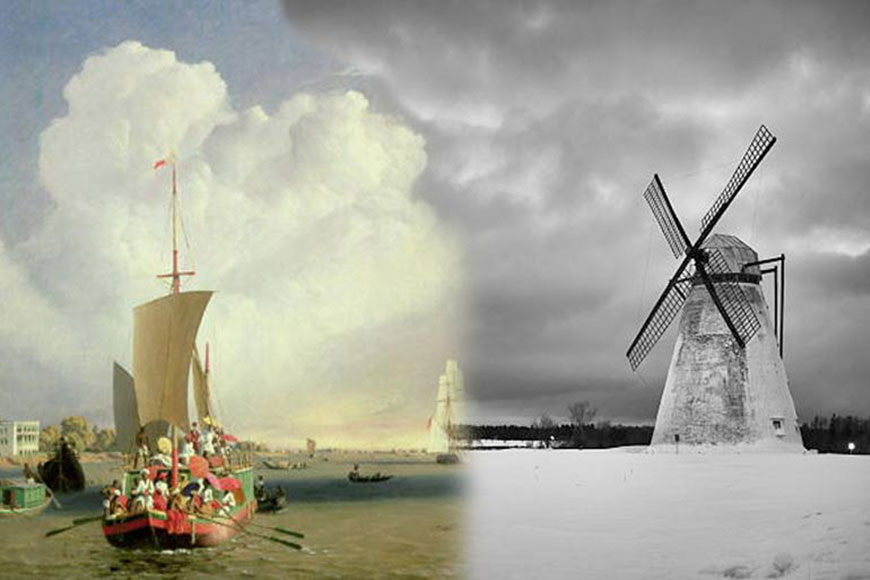Once upon a time Kolkata had twin windmills in the 18th century!

A stone’s throw from the expansive greens of the Royal Calcutta Turf Club in the Hastings area of Kolkata, is the neighbourhood of Kavitirtha Sarani. It meanders close to the river bank on the southern fringe of Kidderpore. Earlier, this area was called Watgunge and the local police station still holds on to this original name.
Watgunge, bordered by the Hooghly River on one side, the Tolly Canal and the neighbourhood of Khidderpore on the other, is one of the city’s oldest areas. The evolution of Watgunge is similar to that of Khidderpore. Because of the proximity of both neighbourhoods to the waters of the Hooghly and the dockyards, the British decided to build on its shores close to 250 years ago.
Way back in the 18th century, this locality was a dense forest. Small fishing boats and foreign ships plied on the river close to the area once in a while. In 1779, a British military engineer named Colonel Henry Watson cleared the dense vegetation and set up his residence there. He was known for his mathematical abilities and knowledge of engineering. After settling down, he initiated the construction of shipbuilding docks in the present Watgunge area in 1779. In fact, he set up the first dockyard in Bengal and was instrumental in rowing the seeds of industrialization in the country.
Colonel Watson had installed two gigantic windmills in his dockyard, again, the first windmills in Kolkata. The windmills had a height of 114 feet and the rotation of the blades could be spotted from afar. A group of locals would holler, “Whose machine revolves with the wind?” and pat would come the reply, ‘Why Watson Sahib’s.” The powerful sails of the windmills whirled very rapidly. Each windmill was five-storey high and used for milling grains and sawing logs.
In those early days, Indians depended entirely on domesticated animals for working in the agriculture and transport sectors. Amid such a scenario, Watson’s mechanical discoveries and installation of different equipment mesmerized the natives and created quite a stir.
However, this rudimentary step towards industrialization was squashed in its nascent stage by the intervention of a rich local resident named Gokul Ghosal. Barrister Barwell had personal scores to settle with Watson and he was livid with jealousy to witness Watson’s success. So he instigated Ghosal to appeal in the court of law against Watson with the allegation that the tall structure of the windmill facilitated Watson to peep and pry in the zenana mahal (the ladies’ wing of the house). The windmills were dismantled after this.
This incident is a pointer to the appalling state of affairs that continues to bug society even now, almost three centuries later. The tradition of extracting revenge for personal vendetta at the cost of greater harm to society continues. There was a time when a majority of factories and manufacturing units located in the state closed for good due to such practices. The joy of creativity waned for people’s lives gradually. All this happened decades ago of course and now humans have transformed into robots
Watson’s windmills had to be dismantled after receiving notice from the court of law. Then there was a long gap and then in 1841, another windmill was made in Calcutta. There was one more on Cossipore Gun Foundry Road, on the bank of Hooghly River, between Bandel and Garden Reach. Watson’s mechanical devices were pulled down in his lifetime but his existence has been etched permanently in the hearts of people and every time Watgunge, christened after him, is mentioned, we are reminded of a brilliant engineer whose greatest contribution was the construction of the shipbuilding dock.










